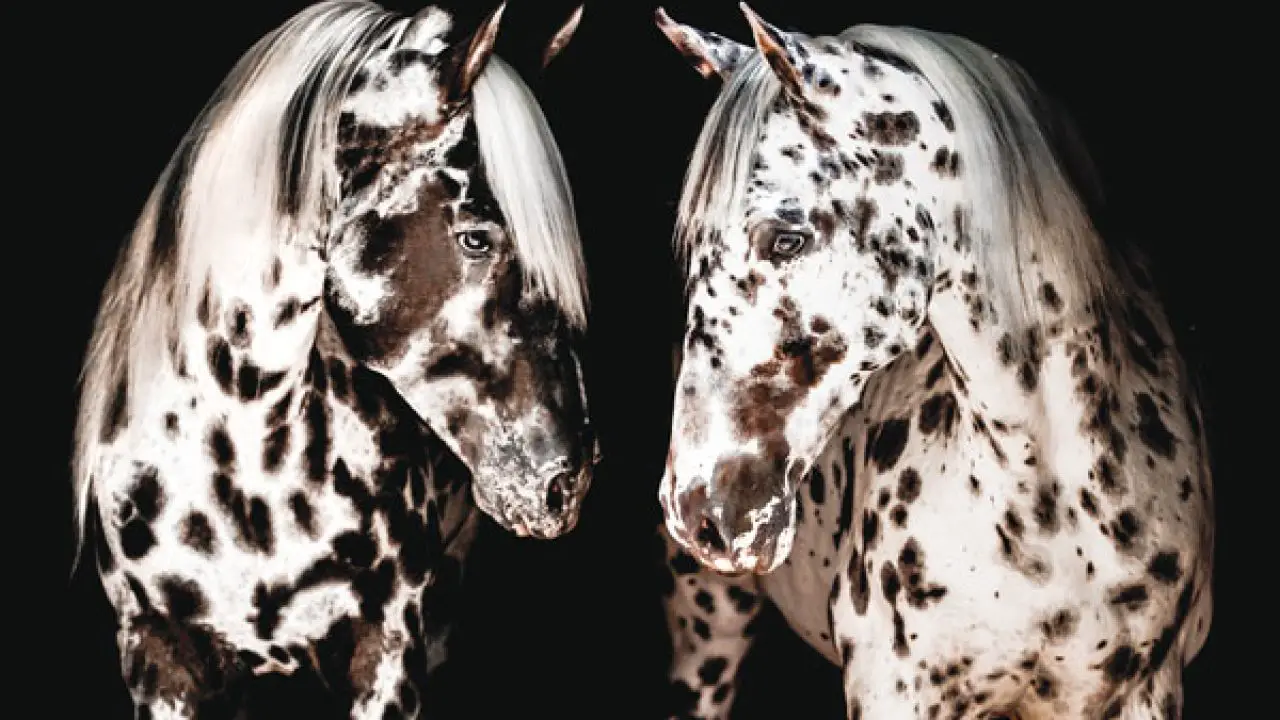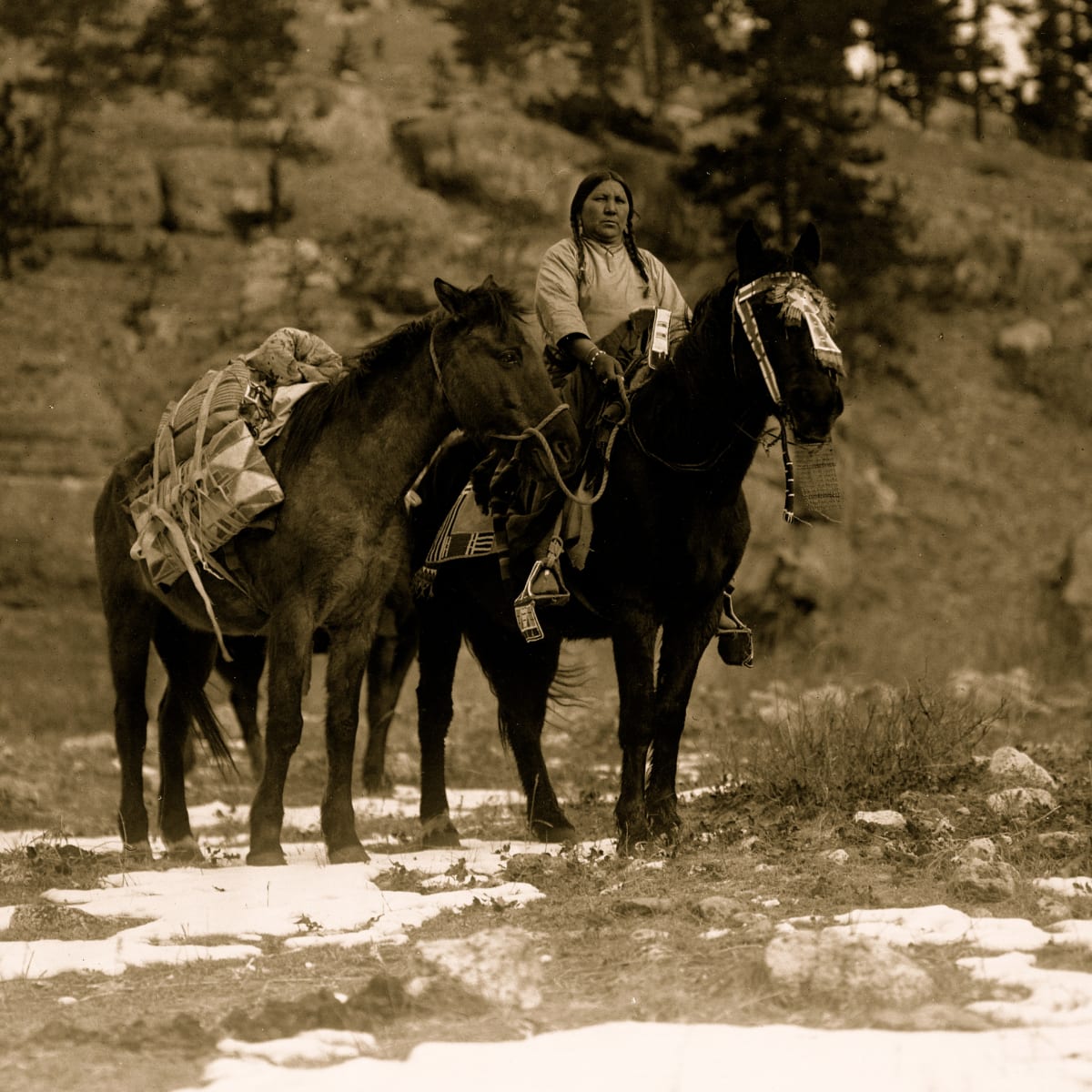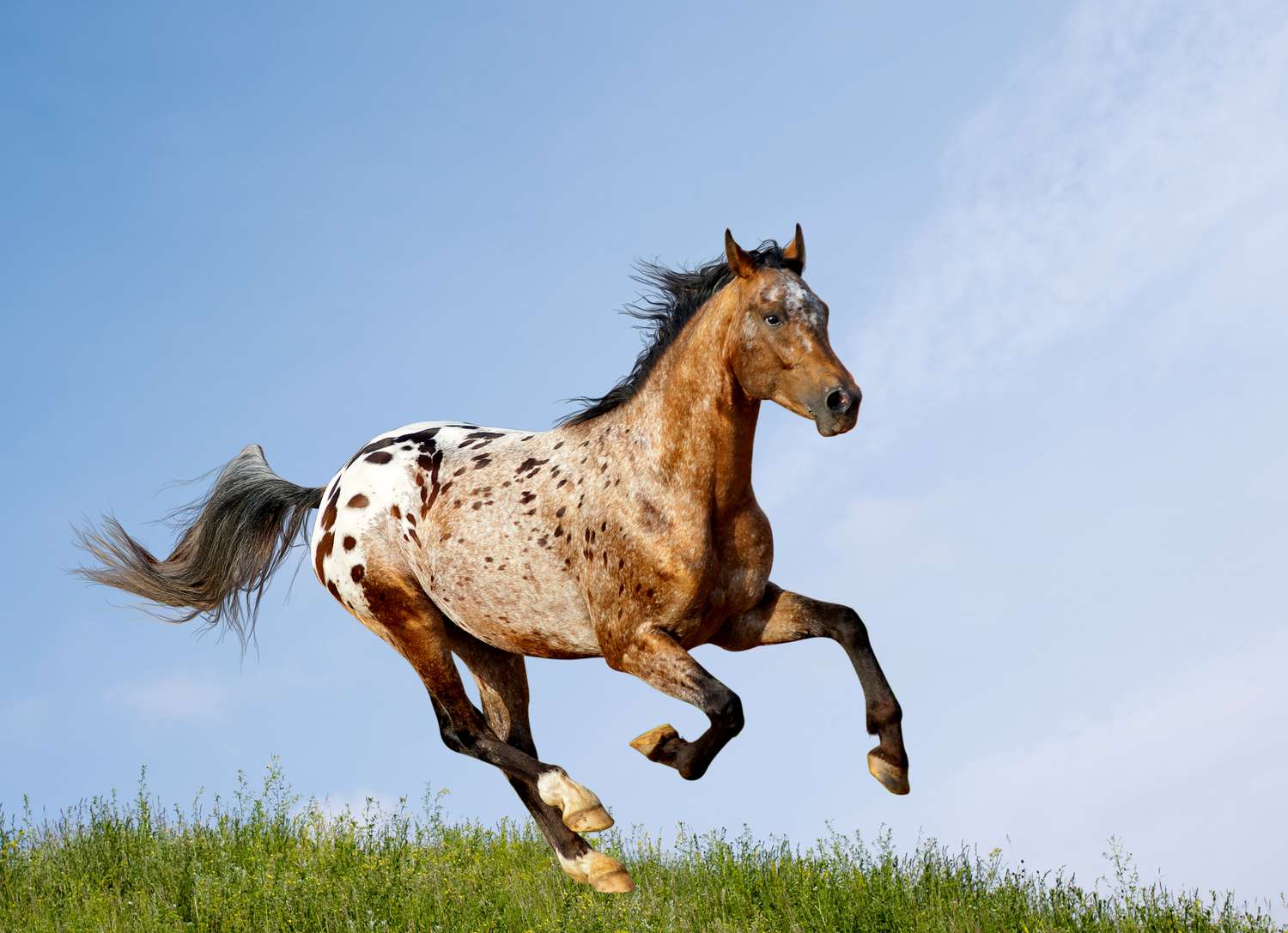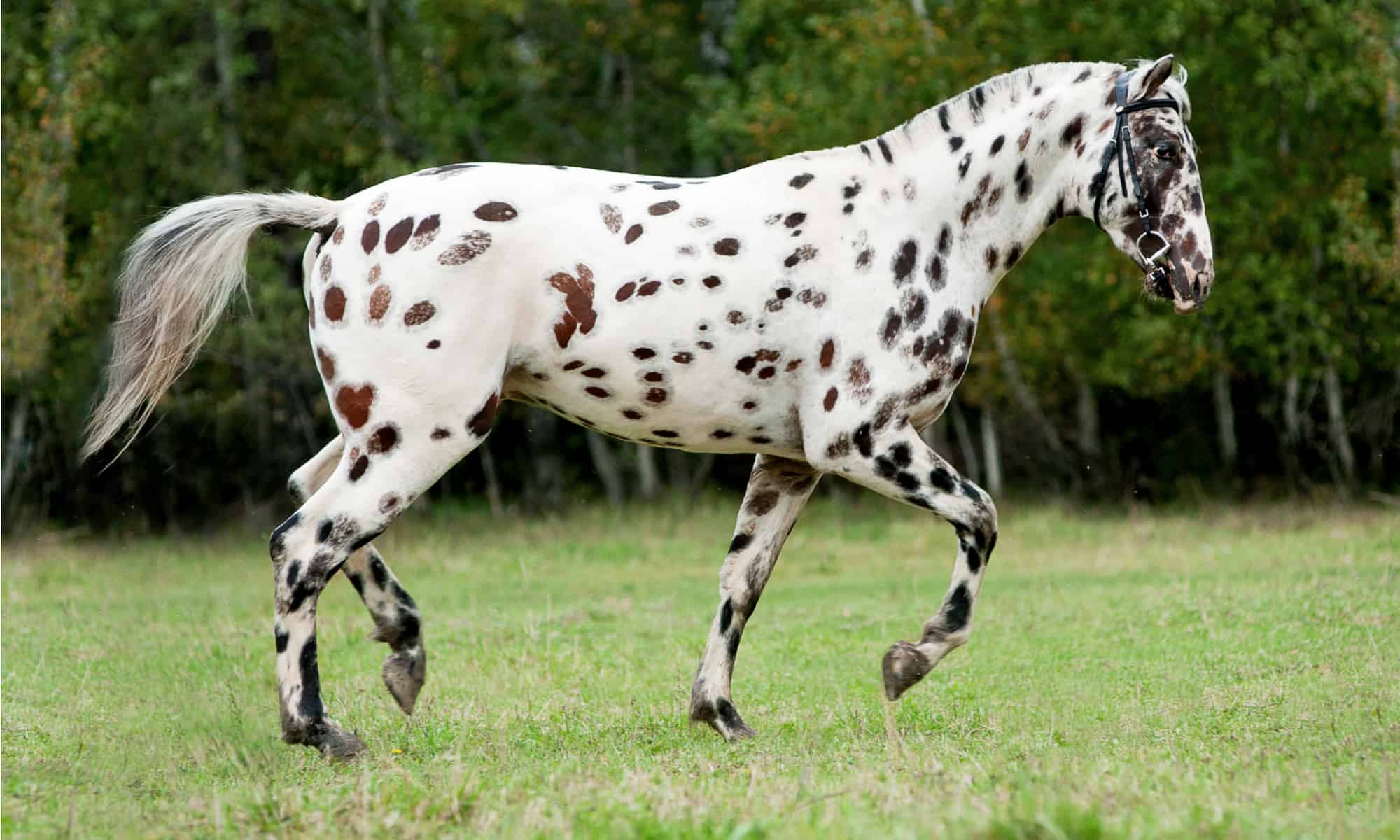Spotted horses have long captured the imagination of equestrians and horse enthusiasts around the world. Their distinctive markings are not only visually striking but also rich in history and genetics. Whether you’re an aspiring horse owner or simply an admirer, understanding the various spotted horse breeds, their unique coat patterns, and the fascinating color genetics behind them can deepen your appreciation for these equine beauties. In this in-depth exploration, we’ll delve into the world of the Appaloosa, Pinto, and other types of spotted horses, unveiling their characteristics, appeal, and the science that paints their extraordinary coats.
A Deeper Look into Spotted Equine Varieties

The realm of equine diversity is vast and spotted equines stand out with their vivid coat patterns, symbolizing the natural variety among horse breeds. These horses are more than just their striking looks; they represent a rich tapestry of cultural significance, having held esteemed positions in various human societies and maintaining their iconic status within modern-day equine communities. The assortment of these equine varieties extends beyond mere aesthetics, presenting a range of physical features and behaviors that cater to the preferences of different horse lovers.
Significance Across Time and Culture
Spotted equines have enchanted humanity since prehistoric times, as evidenced by their depictions in ancient art. Through years of selective breeding, numerous breeds with unique patterns have been cultivated, each with a story echoing its historical and geographical origins. Beyond their beauty, these equines have served as vital contributors to historical progress, taking on roles from transportation to companionship.
Character and Physicality Among Spotted Equines
The personalities and physical attributes of spotted equines can vary greatly. While some breeds are gentle and perfect for those new to riding or for therapeutic purposes, others exhibit a more vibrant energy, ideal for high-performance sports. It’s important for enthusiasts to consider these aspects, along with the horse’s coat pattern, when selecting a suitable companion for their equine activities.
The Spectrum of Appearances in Spotted Equines
- Size Range: Spotted equines come in various sizes, from the smaller, kid-friendly breeds to the larger, more imposing types.
- Pattern Diversity: The array of patterns is broad, featuring the delicate frost-like markings of certain breeds to the bold, contrasting spots of others.
- Unique Patterns: Some patterns are rare and particularly prized by collectors and aficionados for their uniqueness and beauty.
Representation in Art and Popular Culture
Spotted equines have long been celebrated in artistic representations, embodying themes of untamed spirit and elegance. Their roles in literature and film often draw on their unique patterns and the enigma that surrounds them. With the advent of digital media, their captivating images have gained widespread attention, allowing a broader audience to appreciate their magnificence.
Efforts to Safeguard Spotted Equines
Organizations worldwide are actively engaged in conserving the heritage and genetic diversity of these equines. Preservation is achieved through meticulous record-keeping, breeding initiatives, and educating the public about the importance of these breeds.
Considerations for Selecting a Spotted Equine
When choosing a spotted equine, it is essential to balance personal taste in coat appearance with practical considerations such as the intended use of the horse and the rider’s experience. Consulting with experienced breeders and associations can provide valuable guidance in making an informed decision.
Performance and Recognition in Equestrian Sports
Spotted equines are not only aesthetically pleasing but also skilled competitors in various equestrian disciplines. Their agility, stamina, and versatility are showcased in events that celebrate both their physical capabilities and unique patterns.
In conclusion, the world of spotted equines is a microcosm of the broader equine community, showcasing a blend of historical significance, versatility, and beauty. These breeds continue to inspire and serve people, honoring the storied connection between horses and humans while advancing into the future with elegance and distinction.
Exploring the Unique Beauty of Appaloosas

The Origin and History of Appaloosas
Distinct in their lineage, Appaloosas have a storied connection with the Nez Perce people, which goes beyond their physical attributes. Renowned for their endurance and hardiness, these horses were central to the lives of the tribe, symbolizing more than just visual appeal but also serving as a measure of wealth and prestige.
Defining Characteristics of Appaloosas
Appaloosas are not only known for their spotted coats but also for their well-muscled physique and calm demeanor. Their intelligence and trainability make them versatile for a range of disciplines. Every aspect of their being, from mottled skin to striped hooves, contributes to the breed’s uniqueness.
Genetics Behind the Appaloosa’s Coat
The captivating coat patterns of Appaloosas are the result of complex genetic factors. The primary gene responsible for their spots, the Leopard Complex, interacts with various genetic modifiers, leading to a spectrum of patterns, each as distinctive as the next.
Celebrating Appaloosas Through Names
Naming an Appaloosa is a creative process that can reflect the horse’s lineage or the intricate nature of their coat. It’s an enjoyable exercise that strengthens the bond between the horse and the owner, with potential names that might highlight their unique spots or historical background.
- Creative Names: Names like ‘Whirlwind’ or ‘Starry Night’ can capture the essence of the Appaloosa’s coat.
Identifying Appaloosa Markers
Appaloosas are recognized by certain traits that set them apart from other breeds. Their mottled skin and striped hooves are just a few breed-specific features that enhance their unique identity.
- Eye Characteristics: Appaloosas often have a visible white sclera that gives their eyes a distinctive, human-like quality.
Conserving the Appaloosa Heritage
Efforts to preserve the Appaloosa breed involve responsible breeding that honors their unique genetic makeup and storied past. Dedicated breeders and organizations ensure the continuation of this breed’s legacy.
Appaloosas in Contemporary Equestrian Activities
The Appaloosa’s versatility is evident across a variety of equestrian activities. Their ability to excel in different riding disciplines, from Western events to long-distance trails, demonstrates their adaptability and the enduring appeal of their striking coat patterns.
Appaloosas epitomize both their rich heritage and their capability to adapt to modern equestrian roles. Their distinctive spots and resilient nature make them enduring favorites for equestrians of all levels, securing their status in the horse community now and in the future.
The Splendor of Pinto Horses: A Mosaic of Color and Versatility

The Pinto horse, known for its remarkable coat of contrasting colors, stands out as a symbol of equine beauty and diversity. Unlike specific horse breeds, Pintos are defined by their distinctive coat patterns, with a spectrum of white and colored markings. This exploration focuses on the allure and functionality of Pinto horses, as well as the intricate genetics and historical breeding that have shaped their stunning appearances.
Analyzing Pinto Horse Coat Variations
Pinto horses are celebrated for their diverse coat patterns, which are not only visually appealing but also of genetic interest. Breeders, show judges, and horse aficionados gain insight into the Pinto’s allure by studying these various patterns.
Overo Pattern Intricacies
The Overo coat pattern is characterized by its unique and seemingly sporadic color splashes, often leaving the horse’s belly, face, and legs predominantly white. Within the Overo category, there are distinctive subtypes:
- Frame Overo: Notable for its well-defined, framed white patches that typically have a horizontal orientation.
- Splashed White: This subtype gives the appearance of white paint splashed from below, creating a striking upward pattern.
- Sabino: Known for a roaning pattern, the Sabino subtype includes lacy or irregular white markings extending up the legs and across the face.
Unveiling the Tobiano Pattern
The Tobiano pattern is marked by more symmetrical and rounded spots, usually with white extending across the horse’s back between the withers and tail dock. This pattern often presents horses with dark heads and white limbs, akin to wearing an elegant cloak.
Examining the Tovero Pattern
Tovero horses combine traits of both Tobiano and Overo, often featuring dark pigmentation around the ears and mouth, which may extend to the neck, producing the distinctive ‘medicine hat’ or ‘war bonnet’ effect, revered in certain cultural narratives.
Deciphering Pinto Coat Genetics
The mesmerizing patterns of Pinto horses are attributed to complex genetic interactions. The dominant ‘T’ gene is associated with the Tobiano pattern, while a variety of genes are responsible for the Overo and Tovero markings. This genetic tapestry is a constant area of study for breeders and scientists.
Implications of Pinto Genetic Traits
A Pinto horse can possess either homozygous or heterozygous Tobiano genes, influencing the pattern passed to offspring. Horses homozygous for the Tobiano gene will consistently produce Tobiano-patterned progeny.
Considerations for Pinto Horse Health and Genetics
While Pinto patterns are enchanting, some genetic combinations, especially within the Overo pattern, may result in health issues such as Lethal White Syndrome. It’s crucial to employ responsible breeding practices to mitigate these concerns.
Valuation Influenced by Pinto Patterns
Distinctive Pinto patterns can significantly impact a horse’s value. Enthusiasts and competitors often seek out horses with unique or vibrant markings, which can increase their market value.
Supporting Pinto Horse Heritage
Organizations such as the Pinto Horse Association of America and the American Paint Horse Association play a pivotal role in the registration and conservation of Pinto horses. They provide resources and support to protect and celebrate the heritage of these remarkable horses.
Pinto horses, with their captivating patterns and multifaceted roles, continue to be a cherished element of the equine community. Their striking spots and splashes of color make them beloved companions and competitive show horses, maintaining their prominence in the equine world.
Exploring Lesser-Known Spotted Equines

Spotted horse breeds extend beyond the well-known Appaloosas and Pintos, presenting a world of diversity that fascinates equine enthusiasts. These breeds offer a rich palette of colors and patterns, enhancing the equine tapestry with their distinct histories and abilities. Their value lies not just in their striking appearance but also in their adaptability and versatility, which cater to various equestrian disciplines.
Denmark’s Distinguished Knabstrupper
The Knabstrupper, originating from Denmark, shares the leopard-spotted coat with the American Appaloosa and is admired for its performance abilities:
- Dressage: Known for their agility and poise, Knabstruppers are competitive dressage participants.
- Show Jumping: Their strong build and athleticism make them formidable in show jumping events.
- Reliable Family Companions: They possess a gentle disposition, making them ideal for riders of all ages.
Pony of the Americas: A Multifaceted Breed
The Pony of the Americas stands out with its Appaloosa-spotted coat, moderate size, and mixed heritage, offering versatility for various riders:
- Young Riders: Their docile nature and size make them suitable for youth equestrian programs.
- Adults: They are also capable of accommodating adult riders, providing versatility beyond their pony designation.
- Showing: Their agility and striking looks make them popular in competitive shows.
Celebrating Global Spotted Equine Breeds
Across different regions, numerous breeds contribute to the diverse spectrum of spotted equines:
Colorado Ranger: A Hardy American Breed
The Colorado Ranger is esteemed for its resilience and adaptability, often serving as a mount for ranch and trail purposes.
British Spotted Pony: A Breed with Ancient Lineage
This UK native is favored for its charming size and distinctive coat, excelling in driving and as a pony for young riders.
Miniature Horse: Small but Mighty
The Miniature Horse may be petite, but it packs a vibrant personality. Spotted variants of this breed are treasured as companions and show animals.
Appreciating Distinctive Spotted Patterns
Unique patterns define these breeds, each with a genetic backstory:
- Leopard: With dark spots on a light base, this pattern is a signature of breeds like the Knabstrupper.
- Blanket: A white area typically over the hips, possibly containing spots, characterizes this pattern.
- Roan: A blend of colored and white hairs that may cover the body or appear in sections.
These breeds, with their unique patterns and admirable qualities, are invaluable to the equine world. They enhance the horse community with their distinct presence, offering pleasure and variety to equestrians and spectators alike.
Delving into Equine Coat Pattern Genetics

Examining horse coat patterns offers insight into the complex interplay between heredity and aesthetics. This intricate genetic puzzle not only contributes to the breathtaking visuals of spotted horses but also provides information regarding their ancestry and breed specifics. The study of these genetic blueprints is crucial for informed breeding and the preservation of these traits.
Genomic Blueprints of Equine Colors
Genes are the fundamental units dictating the pigment distribution that results in the horse’s coat coloration. While equine genetics is complex, understanding the interactions of different alleles and modifiers is key to grasping the full scope of coat pattern diversity.
Insights into Common Equine Coat Patterns
Nature’s artistic expression is evident in each horse’s coat, with patterns such as snowflake and frost providing unique visual textures akin to their namesakes. These distinct designs are the result of genetic variation, each with its own genetic recipe.
Exploring the Genetics of Spotted Coat Patterns
Genetic intricacies give rise to the spectrum of horse coat patterns. The Leopard Complex is crucial for certain patterns, while modifier genes dictate the nuances. Ongoing research continues to refine our understanding of how these patterns are inherited and expressed.
The Role of Genes in Equine Pattern Emergence
Critical genes such as LP and PATN1 are responsible for the creation of specific patterns. Understanding the function of these genes is vital for breeders seeking to predict the phenotypes of future offspring and for maintaining breed health.
Managing Genetic Diversity in Spotted Horses
The wealth of genetic variation in horses is a valuable asset that must be preserved with care. Genetic testing assists in breeding decisions, helping to avoid health issues while fostering the desired visual traits of these animals.
Genetic Research: Enhancing Equine Knowledge
Modern genetic research methods have enabled scientists to analyze the equine genome more accurately, revealing the genetic underpinnings of coat patterns. This not only enriches our knowledge but also aids in the practical aspects of horse breeding and conservation efforts.
The exploration of horse coat patterns underscores the beauty and complexity inherent in these animals. Each pattern not only represents a visual spectacle but also embodies the horse’s genetic legacy, ensuring the endurance of these stunning traits for generations to come.
Unveiling Spotted Equine Diversity Worldwide

Spotted horse breeds grace the landscapes of various continents, each with its own set of distinctive traits and cultural importance. These equines are much more than their eye-catching coats; they represent enduring legacies of their respective regions. As we journey through the global spectrum of these equines, we gain insight into the diversity that ranges from the drama of the leopard spotted horse to the subtler variations found in less celebrated breeds.
Spotlight on International Spotted Equines
Afficionados who appreciate the rich tapestry of equine breeds find delight in the myriad of spotted horses around the world. Far from being novelties, these breeds are embedded in the heritage of their homelands, with ancestral stories that highlight their development and role in history. Their diverse coat patterns are a living canvas, displaying the genetic variety that has crossed borders and oceans.
Embracing Spotted Horses’ Global Charm
Spotted horses from around the globe captivate with their unique narratives. Embodying a spectrum of behaviors, these breeds cater to various equestrian activities, from traditional ceremonies to the competitive arena. Their versatility and temperament make them as functional as they are visually impressive.
- The Australian Spotted Pony, cherished for its child-friendly disposition, holds a special place in family settings.
- The sturdy Altai Horse, capable of thriving in extreme climates, often boasts a bold leopard pattern.
- Occasionally, the noble Andalusian horse of Spain is graced with spots that enhance its regal bearing.
Exploring the Dramatic Appeal of Leopard Patterns
Among the various types of spotted horses, those with leopard patterns capture particular attention with their starkly contrasting spots. While the Appaloosa is a well-known example, this arresting pattern adorns many breeds and contributes to their popularity in show rings and parades.
- Media Presence: Their unique aesthetics often land them roles in film and television, mesmerizing viewers with their patterns.
- Significance in Heritage: Various cultures hold these horses in high esteem, associating them with noble qualities.
- Event Appearances: Their striking appearance draws crowds, making them stars at public events and celebrations.
In delving into the world of equines, the vast assortment of spotted horse breeds reveals a rich collage of characteristics, stories, and elegance. These horses not only contribute to the beauty of the equine population but also perpetuate the equestrian traditions and cultural bonds that have been cherished for centuries.
When it comes to equine terminology, there are specific names for different types of horses. For instance, a red horse is often referred to by a special name, which you can learn about in our article on what is a red horse called. Similarly, male horses have their own designation, and you can find out more by reading what is a male horse called. For those curious about the younger members of the horse family, our piece on what is a baby horse called will provide you with the answers. Now, if you’re wondering about spotted horses, they too have a unique name that reflects their distinctive coat pattern. Stay tuned as we bring you an informative article dedicated to spotted horses and their nomenclature.
Conclusion: The Beauty and Diversity of Spotted Horses
The world of spotted horses is as diverse as it is beautiful. From the storied Appaloosa to the striking Pinto, and the many other breeds that exhibit these captivating patterns, spotted horses hold a special place in the hearts of many. Their rich history, combined with the fascinating science of horse color genetics, makes them not just a visual delight but also a testament to the incredible variety found within the equine species.



